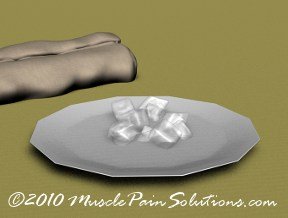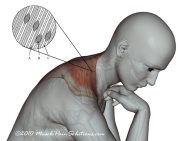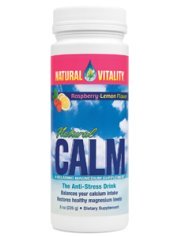A New Form of Trigger Point Release - Ice and Stretch!

Ice and stretch is an amazingly effective form of trigger point release. What I am about to share with you, is the result of my own research and experimentation with trying to release trigger points more quickly and effectively. I am not aware of anyone else teaching or performing this on a regular basis at this time.
Ice and stretch is based on the work of Janett Travell, MD who pioneered and created the field of myofascial trigger points, and trigger point release. She discovered that by spraying a refrigerant or cooling spray over the area of pain from injury or trigger points, she could temporarily "turn off" the pain signal, or "gate" at the spinal cord level. With the pain signal gone, the affected muscle could stop guarding enough to be gently stretched. The cycle of cooling and stretching could be repeated several times and the stretch would deactivate the trigger points. Unfortunately, the spray that she used was a chlorofluorocarbon that has been banned due to environmental concerns. Because of this, the practice has fallen into disuse.
As I was studying her work, I watched a video of her performing spray and stretch and was impressed with the immediate results. Since she mentions in her book* that the spray could be imitated with the edge of an ice cube, I started experimenting with this method and got good — sometimes astounding — results! I feel this is a way that practitioners could more successfully deal with trigger points, and patients might even be able to help themselves, so I am trying to get the word out and get more people practicing this delightfully simple trigger point release technique.
How does it work?
The icing or spraying causes a sudden drop in skin temperature that creates a continuous alarm signal to the spinal cord. This signal inhibits, or blocks the local pain signal and prevents the pain message from reaching the brain. When we feel pain in a muscle, there is an automatic reflex to contract that muscle, or cause spasming. Since the pain signal is blocked, this reflex spasming doesn't happen, so you are able to stretch out the muscle, including the trigger point, and inactivate it.
How to Ice and Stretch
You do not have to do everything perfectly to get results, though you will get better results with doing it more accurately. It is much easier to have someone else do this for you rather than have to do it yourself.
What you will need
- ice cubes, ice frozen in a paper cup, or an ice massage cup
- a towel
- a hot pack, preferable wrapped in a moist towel (I have microwaved a moist towel as a "hot pack" in a pinch)
Technique Summary
- Put muscle in lengthened position with support if possible
- Stroke the edge of the ice over the muscle and pain pattern in thin parallel strokes in the direction that the pain refers, covering all areas of pain
- Take out the slack by gently stretching the muscle (helps to do this while exhaling)
- Repeat above steps 2-3 times
- After the muscle is fully stretched, re-warm with hot pack, return slowly to resting position, and then perform the full range of motion from fully contracted to fully lengthened three times.
Where to find the pain patterns
You need to start at one end of the muscle and cover the whole muscle and continue on to the area of pain referral, which can be quite distant sometimes. If there are other areas of possible pain referral, it is important to cover those as well, even when they are not actively hurting. I also make sure to cover areas that are hurting, even if they are not coming from the muscle being treated. You can find pictures of the pain patterns in The Trigger Point Therapy Workbook by Clair Davies. You can also find images of the pain patterns generated by different muscles on this website, where they have the images from Clair Davis book available to print for free... just search by area or name of the muscle.
For a more through summary of this trigger point release method, I have created the PDF Ice and Stretch available for download below.
You will need Adobe Reader (the latest version is recommended) installed on your computer in order to open and read this summary. You can get Adobe Reader here (a new window will open so you can download it without leaving this page).
If you want to open the file in your browser window, just click on the link. However, if you want to download the file to view later, then right-click on the link and choose "Save Target As" or "Save File As." Then select where you want to save the file on your hard drive.
Download FREE Ice and Stretch PDF here.*Simons MD, David, Janet Travell MD, and Lois Simons PT. Travell and Simons' Myofascial Pain and Dysfunction: The Trigger Point Manual. 2 vols. 2nd Ed. Baltimore, MD: Williams and Wilkins, 1999.
Return from Trigger Point Release to Trigger Point Treatment
Return from Trigger Point Release to Home




